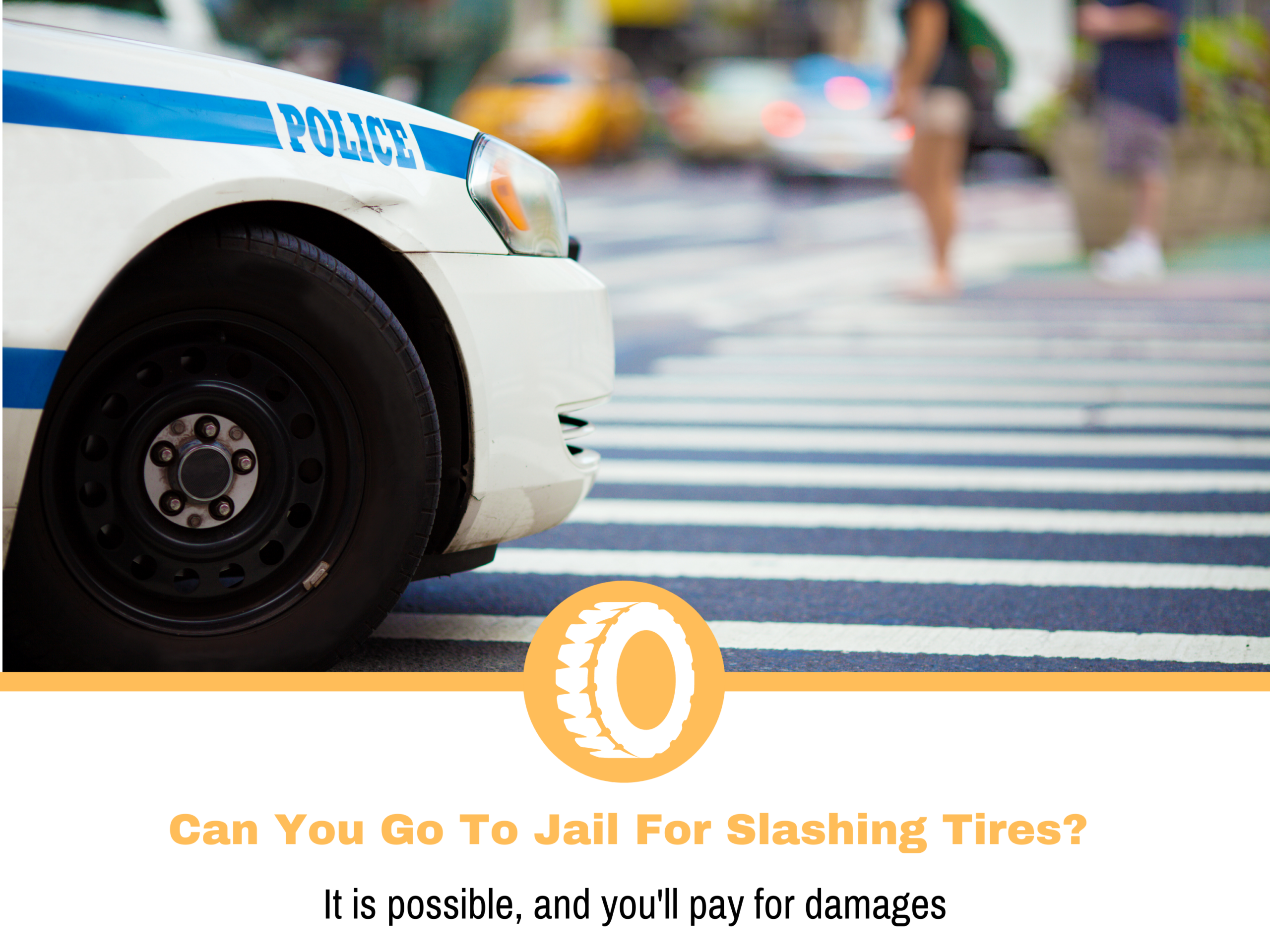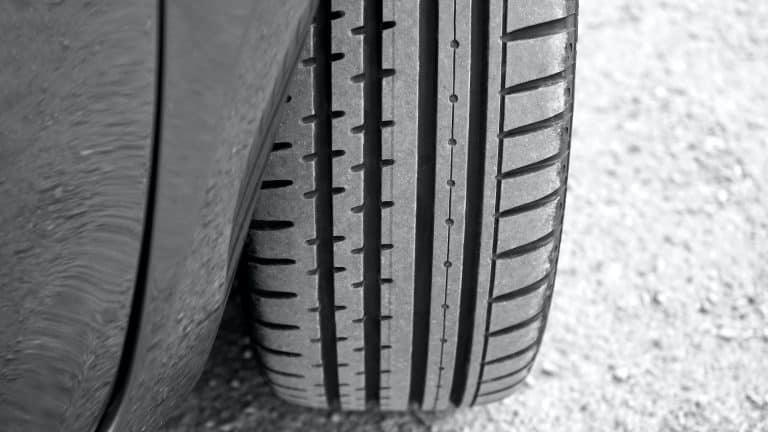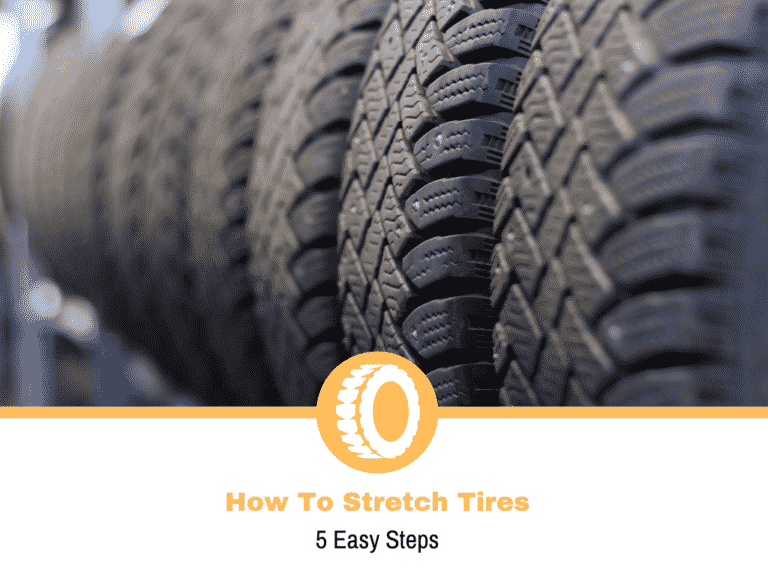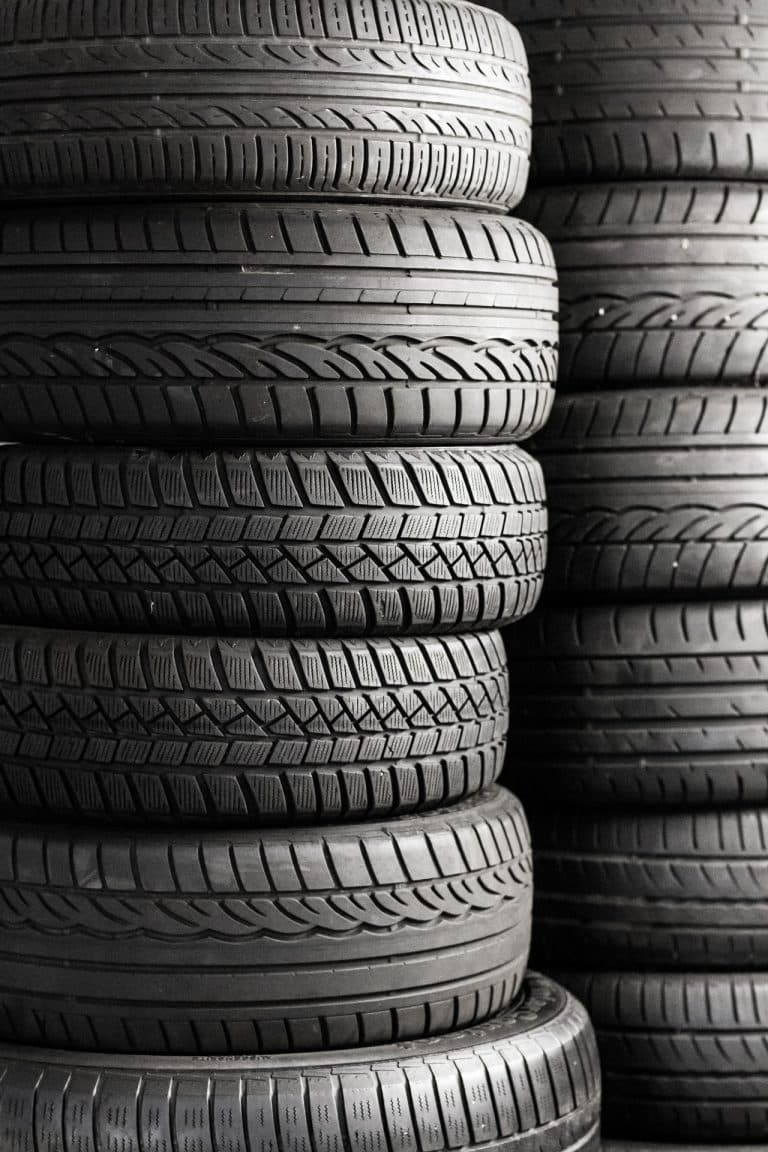Can You Go to Jail For Slashing Tires? (Penalties, Jail)
With our continuous commitment to provide informative articles for your motoring journey, we have covered several topics all about slashed tires. From how to slash them and to fix them, to how to prove someone slashed your tires. Now it begs the question, can you go to jail for slashing someone else’s tires?
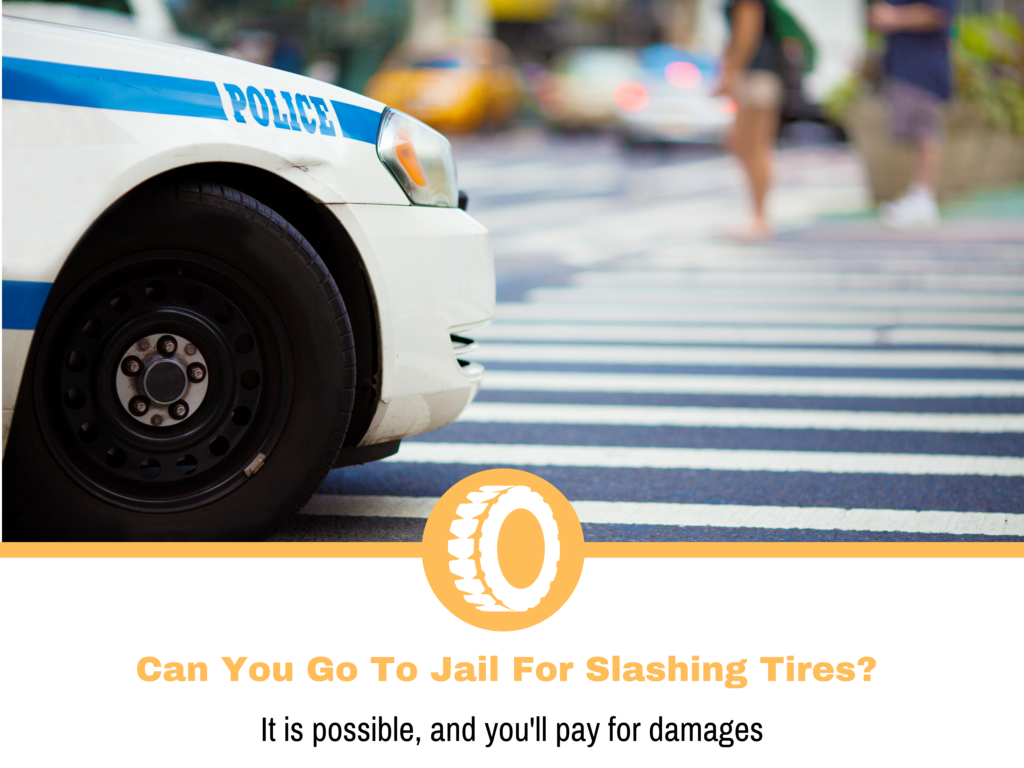
Slashing someone’s tires is an act of vandalism. It’s typically classified as a misdemeanor, and if you go to court, you’ll most likely receive probation, a fine, and be required to make restitution for the tires you break. There is a risk that you could end up in prison, although it is unlikely to have happened that you would do so unless you had a criminal past.
Is Slashing Tires Considered a Felony?
The crime of slashing tires would be classified as criminal mischief under the law. If the damages totaled $1,000 or more, the offense is classified as a felony; anything less is classified as a misdemeanor. Because most tire changes cost only a few hundred dollars, they should be prosecuted as criminal mischief in most cases.
What Types of Criminal Charges Could be Brought Against Someone for Slashing Tires?
A person who cuts another person’s tires will be charged with a crime based on how much damage they did, as well as what else happened as a result of what they did.
Intruding on the property of others by slashing tires (where those tires do not belong to you) is considered criminal activity.
Property damage is referred to differently in different states. In certain areas, the offense is referred to as “criminal mischief,” and there are different levels of seriousness associated with criminal mischief, first degree, second degree, and third degree.
The elements of criminal mischief are usually something along the lines of a person who knowingly, purposefully, carelessly, or negligently participates in action that causes harm to another’s property without their knowledge or consent.
The charge of “disorderly conduct” is another sort of offense that can be levied in some states when someone damages the property of another. Disorderly conduct is classified in the same way as criminal mischief is. There are numerous levels of disorderly conduct.
The elements of disorderly conduct are typically composed of deliberately, purposely, carelessly, or negligently on one’s own, engaging in inappropriate behavior that results in a possibly dangerous or offensive situation without having the authority to do so.
It’s easy to understand how slashing tires (which could render a vehicle unsafe to drive) could be considered disorderly behavior.
Which Criminal Charge, Misdemeanor or Felony, will be Filed Against the Person who Cut Tires?
In most places, the difference between a misdemeanor and a felony is determined by the amount of harm that was caused. A misdemeanor may be charged in the case of a single tire slashing if the tire’s replacement value (to the prior state of the worn tire or even brand new) is less than a few hundred dollars.
If all four tires are fully destroyed, and the worth of the tires, as determined by an expert (a tire company), exceeds $1000 or more, it is quite likely that the charge will be upgraded to a felony charge. The amount of damage required to elevate a case from a misdemeanor to a felony will differ from one jurisdiction to the next.
Let us suppose, on the other hand, that the “slashing” of the tire did not entirely deflate the rubber, or that the motorist was unaware that his tire had been slashed.
Let’s imagine the person travels with a slashed tire and ends up in a car accident. He may have been injured as a result of the accident with his vehicle. It’s possible that the property of a third party has been damaged. Possibly, the driver or other individuals are injured or killed in the collision.
He could be charged with a variety of serious felonies, including murder and manslaughter as well as attempted murder and manslaughter, negligent homicide, assault, and other offenses.
The slasher could be held liable for all of the logical implications of his conduct, including murder.
Is the Number of Tires Slashed Important?
In most cases, no. In the end, the intent of the perpetrator, the amount of damage caused, and any other consequences are the most major factors. It makes a difference if you have one tire, two tires, three tires, or four tires when it comes to determining the value of the damages.
The Decision to Charge Someone is Influenced by their Motivations and Intentions
It is important to understand the purpose of the tire slasher. The case may be merely criminal mischief. A person could be prosecuted with attempted assault or even attempted murder if the slasher’s aim was to inflict substantial physical harm or death to another person (even if it was physically impossible for him to kill the driver by slicing the tire).
In these types of prosecutions, the intent is frequently established through witness testimony detailing what the slasher claimed he desired to happen. Additionally, printouts of text messages from the defendant, social media posts, or even earlier negative conduct by the defendant against the victim are frequently used to establish intent (highly technical).
The most serious crimes are those that are committed with the intent to harm (meaning full knowledge and understanding that the outcome would result from the action).
Less serious forms of misconduct include reckless behavior (which means that the perpetrator should have known what would happen but chose to ignore the danger) and negligent conduct (failing to act reasonably).
Considering the Victim
Some states have laws in place that make illegal activities against specific individuals more serious than they would otherwise be.
For example: slashing the tires of a neighbor or stranger is likely to be a less serious offense than cutting the tires of a current or former partner, girlfriend/boyfriend, or girlfriend/spouse boyfriend’s (domestic violence enhancement). The same holds true if the tires that were slashed belonged to someone above the age of 65 years (elder abuse enhancement).
The tires could also be used by critical government agencies or departments (such as the fire department, paramedics, first responders, police enforcement, and so on), which could result in an enhancement to a criminal conviction in some cases.
Criminal History
When a defendant has a history of previous convictions for the same activity within a specified period, some jurisdictions have statutes in place that make the accusations against him or her more serious.
How Long will You be Jailed for Slashing Tires?
The amount of time spent in prison may be determined in part by the worth of the tires. If the amount was greater than $1,000.00, the penalty may be up to five years in prison. However, if the amount is less than 1,000, the punishment could be up to a year in county jail. Your acquaintance will need to retain the services of a private criminal defense counsel, and this is not an issue of civil rights at all; rather, it is a question about criminal defense.
Conclusion
In the end, whether a tire slashing is considered a misdemeanor or something more serious is highly influenced by the jurisdiction in which the incident occurred as well as the circumstances surrounding the incident itself.
